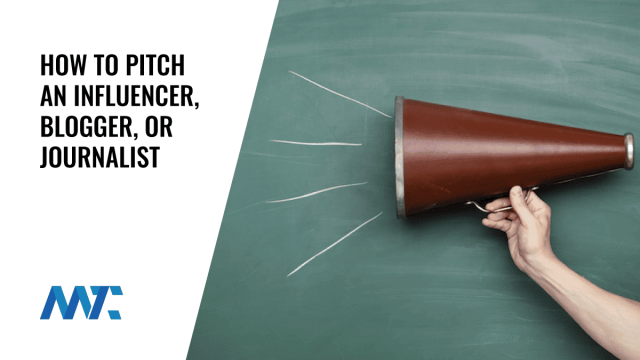Every day, I receive pitches from PR professionals, marketers, and startup founders hoping to get featured on Martech Zone. Most fail miserably. But occasionally, one lands perfectly in my inbox: relevant, respectful of my time, and rich with material I can use.
Here’s a video that shows how an effective pitch works from a publisher’s perspective.
Years ago, I received a near-perfect pitch that hit all the right notes. While the message itself might be a bit dated now, the structure still serves as a case study on how to pitch a blogger (or any content creator) correctly. I’ve written about how NOT to pitch a blogger... how about HOW TO pitch a blogger.
Let’s examine why this email worked and how to improve it for today’s digital landscape. Here are the characteristics that make this work:
Table of Contents
The pitch was personalized.The pitch succinctly delivered the key information.The pitch included a quotable soundbite.The pitch is linked to the original story.The pitch suggested specific ways I could use the content.The pitch gave context on the expert.The pitch closed with a real name, title, and company.The pitch included an opt-out.What Could Have Made it an A+?Final Grade: B+
The pitch was personalized.
Most pitches I get are glorified mail merges. They lack context, effort, and a clue about who I am or what I write about. This pitch began with my name and referenced content relevant to my interests. A modern improvement would be referencing an article I wrote and explaining why this pitch connects.
Takeaway: Do your homework. Reference past content or common themes, and clarify that this isn’t a mass email. A line like, “I noticed you’ve covered AI in martech recently—this story builds on that narrative…” goes a long way.
The pitch succinctly delivered the key information.
It didn’t include a 1,000-word press release in the body of the email. Instead, the sender summarized the main idea quickly and clearly. Today’s bloggers and editors are even more pressed for time, so brevity is a virtue.
Takeaway: Think like a journalist. Open with the headline, give the “lede,” and then offer supporting details. Use formatting (bold, bullets, spacing) to simplify scanning on both desktop and mobile.
The pitch included a quotable soundbite.
This was a goldmine. Not only did it include a quote, but it was colorful, vivid, and instantly usable. It eliminated a step for me as a writer. I didn’t need to chase a spokesperson or parse a jargon-filled press release.
Takeaway: Pre-packaged quotes from credible sources are invaluable. Bonus points if you include variations (serious, witty, short-form) to suit different content styles.
The pitch is linked to the original story.
You’d be amazed how many PR pitches bury or forget to include the source material. This one made it easy for me to read the full article, evaluate it, and link out properly for my readers.
Takeaway: Always include a clean, direct link to the content. If it’s behind a login or embargoed, say so upfront and offer access options.
The pitch suggested specific ways I could use the content.
This is where the pitch truly shined. It listed multiple use cases—from writing a story, tweeting the link, and interviewing the expert. It was thoughtful, actionable, and tailored to different types of content creators.
Takeaway: Help the recipient visualize the possibilities. Suggest article angles, formats (quote roundup, trends post, podcast segment), and social media captions. Think like a collaborator, not a beggar.
The pitch gave context on the expert.
Why should I care about the expert being pitched? The message included a track record, high-profile clients, and domain expertise in social video marketing—just enough bio to establish credibility without overwhelming me.
Takeaway: Always include credentials, notable affiliations, and unique point of views. It’s a bonus if you link to a bio page, LinkedIn, or past press to validate claims.
The pitch closed with a real name, title, and company.
This matters more than people think. A human being sent this message. I can look them up. I know their role. This isn’t coming from info@pragency.com with no way to reply or engage. It builds trust.
Takeaway: Don’t be anonymous. Include full contact info, and if you’re pitching on someone’s behalf, clarify your relationship to the subject matter.
The pitch included an opt-out.
CAN-SPAM is real, and most bloggers didn’t ask to be added to your outreach database. This pitch included a link to opt out—rare, but appreciated. It shows respect for boundaries and inbox hygiene.
Takeaway: Always comply with email marketing laws. Better yet, ask permission before adding people to your outreach list. You’ll build stronger long-term relationships.
What Could Have Made it an A+?
The only thing missing was a clear connection to my audience. A line tying the pitch to a topic or theme I regularly write about would have sealed it. Something like:
I know Martech Zone covers digital video and social marketing strategy—this story hits both.
That’s the leap 90% of PR folks still don’t take: connecting the pitch to the blogger’s audience. And it’s arguably the most essential part.
Final Grade: B+
This email earned a B+ back then, but with just one slight improvement, it would have been an A+. Use this as your template for significant outreach, and you’ll stand out from the noise in any creator’s inbox.
©2025 DK New Media, LLC, All rights reserved | Disclosure
Originally Published on Martech Zone: How to Pitch an Influencer, Blogger, or Journalist

